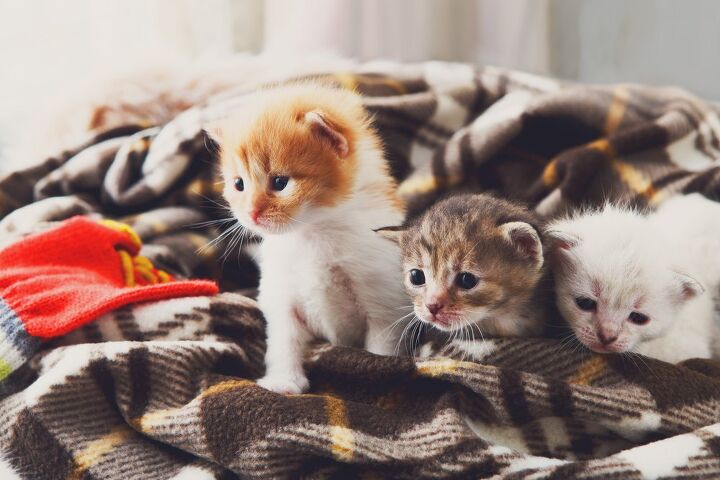How to Set Up the Perfect Environment for Foster Kittens

If you’ve been thinking about fostering cats, and you’ve read our interviews with foster moms Nikki and Danielle, you might be ready to take the next step and get involved. But before you contact a local shelter or rescue group that has kittens in need of a foster home, check out our tips below so you can set up the perfect environment where your kittens will be able to feel safe and comfortable.
Set Aside an Area in Your Home for Your Kittens
Rather than letting your foster kittens have access to your entire house, it’s best to set aside a particular area where they can be safe and secure, and where you can easily keep an eye on them.
Ensure the space is set to a comfortable temperature for your kittens. Being able to clean the area with ease every day is definitely going to be necessary as well. And keep in mind, too, that you’ll need to thoroughly sanitize the space if your kittens are ill. Sanitization will also be required after your kittens are adopted and before you introduce a new set of foster babies.
Ideal Environments for Kittens of All Ages
Kittens at different stages of their development will have different requirements, so you’ll need to tweak the space as needed.
- If you’re fostering bottle babies that are 0-3 weeks old, placing them in a box, bin, or carrier with an opening at the top is recommended (keep the top open). A plastic bin without a lid is a nice idea because it’s see-through, the sides are tall enough that the kittens won’t be able to get out, and it’s easy to clean. Place a soft blanket inside, along with a kitten-safe heat source, such as a heating pad that’s set to low or a microwavable heating disk, that can be placed under the blanket. A stuffed animal, such as one that has a battery-operated heartbeat, can also provide much-needed comfort by mimicking the presence of a mama cat.
- If you’re fostering kittens that are 3-8 weeks old, a soft-sided playpen that has mesh sides and a zippered mesh top is a great place for your fosters to continue growing. The playpen should be easy to clean, and it should be able to keep the kittens confined and safe. In addition to the blankets, heat source, and comforting stuffed animal, though, you can also line the bottom of the playpen with potty pads in case messes occur. Add in a shallow litter box (this could be as simple as the cardboard tray that canned cat food comes in), and fill it with a kitten-appropriate, fragrance free, non-clumping litter. Your kittens will also start weaning during this period, so shallow food and water dishes should also be placed in the playpen, making sure that they’re a good distance away from the litter box. And, as your kittens grow, you can even provide them with a hideaway, a little cat bed, and kitten-safe toys.
- Once your fosters are old enough to leave the playpen, they can have their own dedicated room, if you have one for them. One thing to think about: it’s best to avoid keeping your foster kittens in carpeted areas, as carpets are harder to clean and sanitize. Ensure the room doesn’t contain any hazards, such as places where a little kitten might get stuck. Even tall furniture can be dangerous to a kitten who could fall from it. You also want to remove small objects, toxic plants, strings (such as those on blinds), and cords, as a few examples of things that could harm your kittens. Set up a shallow litter box, food and water bowls, and other essentials, such as a small scratching post and cat bed, making sure everything is easy to keep clean.
Fostering to Save Lives Doesn’t Require a Ton of Space!
There are so many wonderful reasons to start fostering cats in need. And now that you know a few of the best ways to set up the ideal environment for the kittens that you’ll be caring for, you can be one step closer to saving lives and uniting kitties with their forever families.

Lisa Selvaggio is a freelance writer and editor, and our resident cats-pert, with certifications in pet nutrition and pet first aid. She enjoys producing content that helps people understand animals better so they can give their pets a safe and happy home.
More by Lisa Selvaggio























